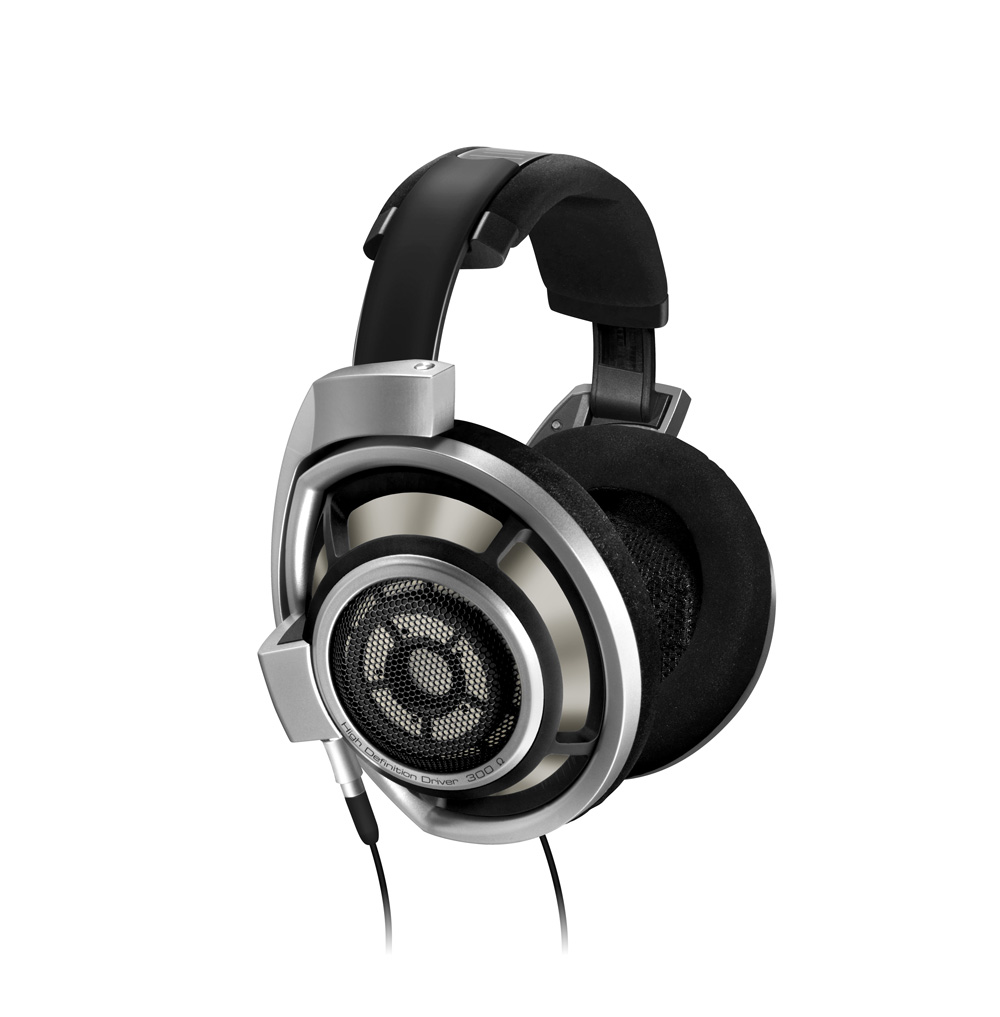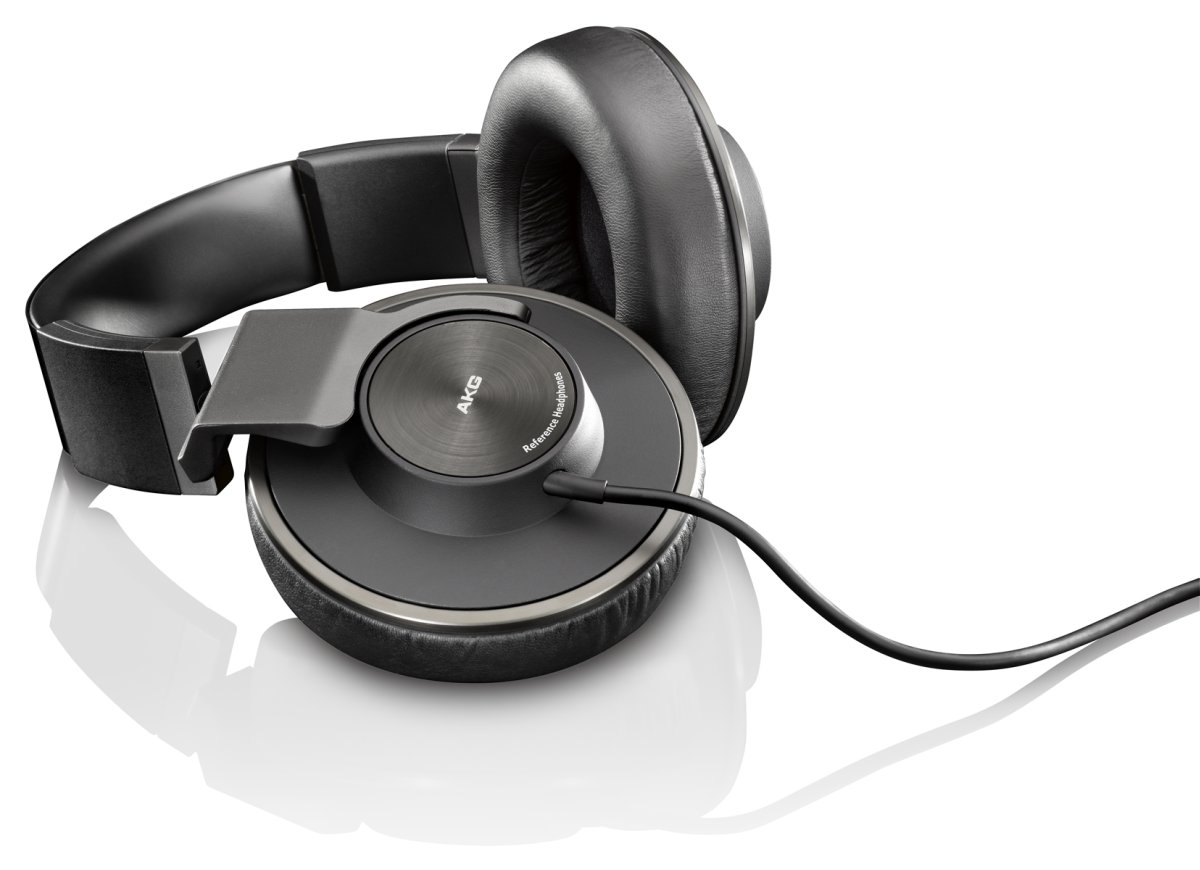What Does It Take To Turn The PC Into A Hi-Fi Audio Platform?
Most hi-fi audio is stored in digital form. With advancements in lossless compression, bit-perfect ripping/streaming, HD audio formats, multi-terabyte storage, and PC-friendly DACs, has the PC earned a place among high-end audio gear? At what price point?
Test Setup: Sennheiser HD 800 And AKG K 550 Headphones
We're testing using two set of headphones. Because this is a story about high fidelity, they're expensive. If you don't listen to quality music recordings, or don't care about the upper echelon of audio equipment, they're almost certainly overkill. You'd get better value out of more affordable models.
Beyond their price tags, these two headphones are different in many ways.
Sennheiser's HD 800 is the company's flagship headphone. At $1500, it's prohibitively expensive. Quality-wise, however, it's considered one of the best in the world (along with the Audeze LCD-3 at $2000, Grado's PS1000 at $1700, the Fostex TH-900 at $1500, Ultrasone Edition 12 for $1700, HiFiMan's $1300 HE-6, and the $1400 Beyerdynamic T1 Tesla). The $4450 STAX SR-009 also deserves a mention as the best-known commercially available electrostatic headphone. We're sure that the circle of headphone royalty could be argued to include others, but it's safe to say that this list generally almost always qualify for the distinction.
The HD 800 is an open back and circumaural design. In plain English, that means these headphones don't block outside sounds and envelop your ears, resting on the sides of your head. Not surprisingly, then, they're also big, though surprisingly light for their size. Sennheiser rates the HD 800s for 300 Ω impedance, placing them in the high-impedance category of electrically-inefficient headphones that amplifiers have a hard time driving. This can also be a boon too, making them less sensitive to the output impedance of the amplifier itself. Even at 300 Ω, the HD 800's impedance is still half of some Beyerdynamic headphones, which can reach 600 Ω and are some of the hardest headphones to drive.
Sennheiser's top-end headphones connect through a Y-cable with a fixed 1/4" TRS plug. The cable is removable, so if you happen to break it, replacements are available. You can also swap out the stock cable with a more expensive one, though we haven't seen the benefits proven in a reliable blind test.
Besides their audio quality, the one characteristic I personally appreciate about the HD 800s is that their circumaural design and light weight mean they're extremely comfortable over long listening sessions.
We also used the AKG K 550 headphones for a few tests. They're marketed as reference. At $200 (and sounding very nice), they certainly deserve a place in the ranks of headphone nobility. The K 550s employ a circumaural design too, though they're smaller than the HD 800s and don't clear my ears as well. With less padding on the head band, the AKGs are far less comfortable overall, at least for me. AKG employs a single non-detachable cable instead of a Y-cable, which is intended to help with clutter.
Get Tom's Hardware's best news and in-depth reviews, straight to your inbox.
These are traditional 32 Ω headphones. They come equipped with a 3.5 mm connector and 1/4" screw-on adapter. So, the K 550 can connect to your portable music player or phone, while the HD 800 is simply too difficult for a mobile device to drive. Another major difference is that the K 550s are based on a closed-back design, yielding certain privacy advantages. You can't really get away with using open-back headphones, say, at the office. Closed-back headphones also dampen outside noise; that can be a boon in relatively noisy environments.
The merits of open- and closed-based designs when it comes to sound quality are much more open to debate. Most top-of-the-line headphones are at least semi-open. Only the Fostex TH-900 is closed-back, and arguably not as popular as some of the other options on our list. Personally, I own affordable closed-back (Sony MDR7506, $85) and open-back (Grado SR80, $100) headphones, in addition to the high-end HD 800. Regardless of price point, when I have the choice, I use open-back headphones; I simply prefer their sound.
Current page: Test Setup: Sennheiser HD 800 And AKG K 550 Headphones
Prev Page Realtek ALC889 Next Page Test Setup: Volume Matching And Testing The Listener-
SuckRaven Bravo ! Awesome, and a very thorough review. Even though as you mention, audio gear is not usually the forté/emphasis of the reviews here, it's refreshing to have someone at least try to cut through the (more often-than-not) overpriced arena of bullshit that is the field of "high-end" audio. I applaud the review, and the effort. Keep up the good work. More please.Reply -
PudgyChicken Just wondering, why not test a Creative X-Fi Titanium HD or something like that alongside the ASUS Xonar? It would be interesting to see some of the differences between different PCIe sound cards in this matchup. However I understand that what you were really going for was showing the difference between price point and form factor at the same time, so perhaps not testing two PCIe cards makes sense.Reply -
kitsunestarwind The biggest thing I have found for the PC is no matter how good your DAC is , if your speakers and AMP are crap, then it will never sound better.People spend big money on DAC's and forget that you need a high Quality amp with very very low THD (total harmonic distortions) and a very good set of Full Range speakers with high sensitivity if you want good sound, instead of crappy (albeit expensive) computer speakers especially sets with a sub.Reply -
maestro0428 Wonderful article! I love listening to music and do so mostly at my PCs. I try to set up systems where audio is important in component selection. Although we all love drooling over expensive equipment, many times it is not all that necessary for an amazing experience. I'd love to see more! Including smaller, studio speakers as I believe that speakers/headphones are the most important part of the equation. Keep up the great work!Reply -
Someone Somewhere Agree totally with this. It always annoys me when people say they're spending over $100 on a sound card, especially when it turns out that they're using Optical out, and the whole thing is basically moot.I now have a nice source to link to.Reply -
1zacster The thing is you can't just pick up two sets of good headphones, try them on different DACs/AMPs and expect to hear major differences, it takes longer than 5 minutes for your ears to adjust to newer headphones and for the differences to actually show. This is like taking food from Left Bank and then bringing in a bunch of hobos and asking them tel tell the differences between the foods.Reply -
dogman-x I use an optical cable from my PC to a home theatre receiver. With this setup, stereo CD audio content is sent as raw PCM to the receiver, not compressed into DD or DTS. These days you can buy a very good quality home theatre receiver for less than $200. Audio quality is outstanding.Reply -
Memnarchon I would love to see ALC1150 in these tests too, since its widely used at most Z87 mobos.Reply

